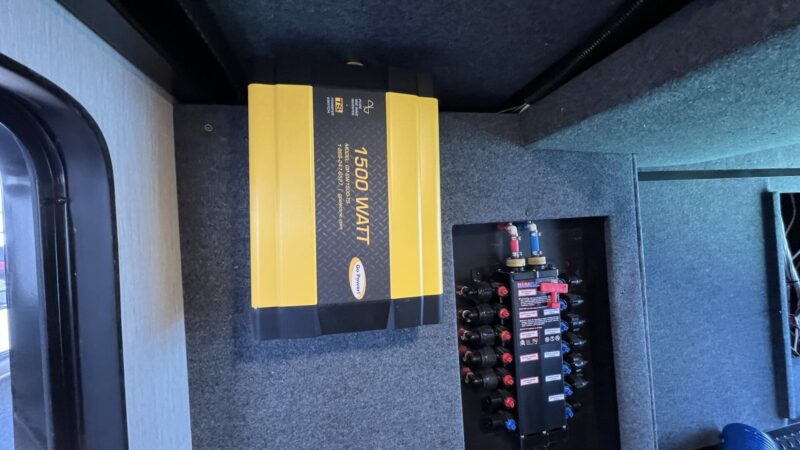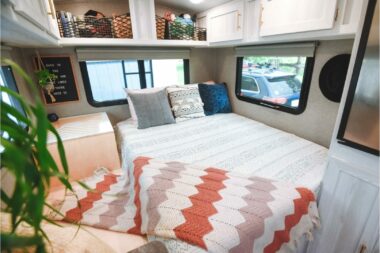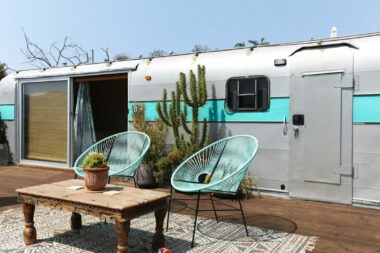Table of Contents Show
Power supply is the name of the game when camping in an RV. Whether you’re comfy in a campsite or in a dispersed camping spot, you need electricity to power your devices. The apparatus that enables you to use your air conditioner or television is the RV power inverter.
What Is an RV Power Inverter?
When consuming power in a recreational vehicle, the electrical system has two different supplies: 110v or alternating current (AC) and 12v or direct current (DC). Appliances that plug into a typical wall socket with two prongs run on 110v power. Some of your rig’s lights and the furnace run on 12v power. An RV power inverter takes the current from your battery (12v) and turns it into usable 110v power for larger appliances. This makes it possible to use an AC-powered television while boondocking. As a result, the inverter will change the battery or 12v DC power into 110v AC power.
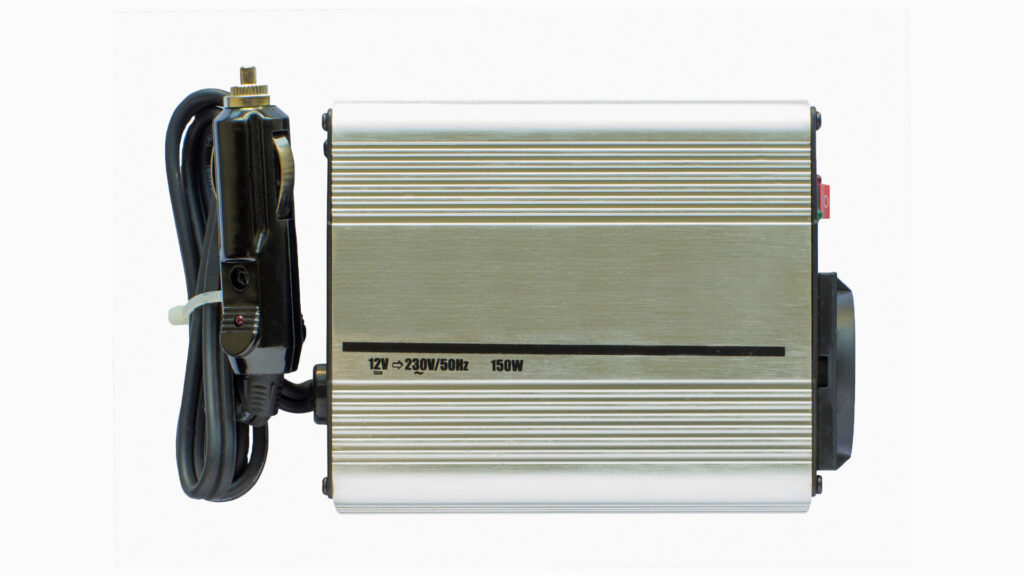
What Is the Difference Between an RV Inverter and a Converter?
While an inverter turns 12v DC power into 110v AC power, a converter does the opposite, stepping down 110v AC power into 12v DC power that it can use in your RV’s 12v appliances and accessories. The converter operates when plugged into shore power or when your generator supplies power. That process takes that 110v current and lessens the voltage for your 12v equipment, like the lights and your furnace.
The inverter takes battery power (12v) and steps it up to 110v for some of your bigger RV appliances like an air conditioner, a space heater, or a television.
What Is an Inverter Used for in an RV?
Your RV inverter runs larger appliances and power-hungry systems like the microwave or convection oven, a space heater, curling iron, electric blanket, or refrigerator. These all require more power than it’s offering in a 12v system. So the inverter turns the ‘one-way current’ of DC power into a ‘two-way current’ of AC power.
A few things to consider: 12v DC power is more energy efficient. This makes sense, as it uses a voltage of almost 10x less than 110v AC power. So when you’re contemplating boondocking or setting up solar power for your rig, you will be forced to conserve amp hours. The use of more 12v appliances will keep the amp hours lower than using 110v appliances.
And some larger appliances have been adapted for use as 12v ones. A good example is a three-way refrigerator, which can run on AC power, DC power, or propane, giving you options in your energy consumption.
Do I Need a Power Inverter in My RV?
Unless you only intend to use smaller 12v accessories and your RV furnace, you may want to consider including an RV power inverter in your rig’s essential equipment. Many campers run some of their larger appliances by generator when boondocking. However, many campgrounds don’t allow these noisy engines at night. They use a good amount of fuel while running. Some estimates say a gallon of gasoline is used each hour a generator runs. So, installing an inverter will give you a more well-rounded power plan.
Pro Tip: Not sure how your RV electrical system works? Click here for the full guide!
How Big an Inverter Do I Need for an RV?
Figure the energy needed to run your largest appliance, and you will be able to select the proper size inverter. For instance, an air conditioner pulls approximately 13 amps of power. Because it runs on 120v power, multiply 13 by 120, which equals 1,560 watts. But it takes more than 1,560 watts to start the compressor on an air conditioner, so plan for a larger inverter of 3,000 or 4,000 watts.
Most RVs have an electrical load that would require an inverter rated at 2,000 to 4,000 watts. They usually have a peak of double that (to start things like air conditioner compressors). So for that air conditioner to start, it might require 3,000 watts as the compressor kicks on, then settle into 1,560 watts.
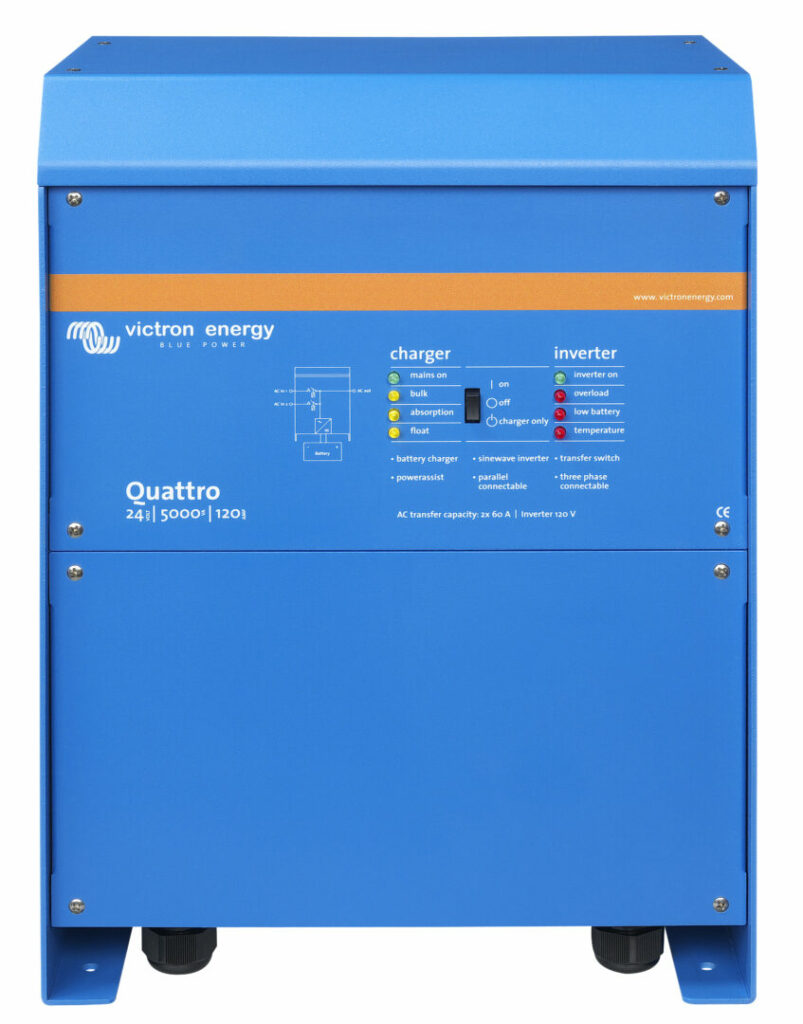
How Do You Install an Inverter in an RV?
Choose a location for your RV inverter as close to the power source as possible. Make sure that it will have some ventilation, as it can get a little hot. The shorter the distance from the inverter to your battery, the less voltage is dropped as the current moves through the wires. Then attach the positive wire from the battery to a fuse. Lead the wire from the fuse to the positive terminal of the inverter. The negative wire goes directly to the negative terminal on the inverter without attachment to the fuse. With this simple setup, you can plug 110v AC appliances directly into the outlets on the inverter to power them.
More intricate installations include adding a switch after the inverter that separates it from the converter in your RV so that power only goes through one of those devices at a time. The current goes into your recreational vehicle’s power panel from the auto switch. This would then send 110v AC power to the wall plugs in your rig for consumption by larger AC appliances.
How Much Does an RV Inverter Cost?
Depending on the size of the inverter, costs may range from $150 to $500 for a 1,000 to a 3,000-watt unit. But another consideration that will drive the price higher is investing in a pure sine wave inverter. This designation means the inverter will have a steady, continuous wave of current necessary for some of your more fragile devices like electronics. These inverters may add a couple of hundred dollars to the price.
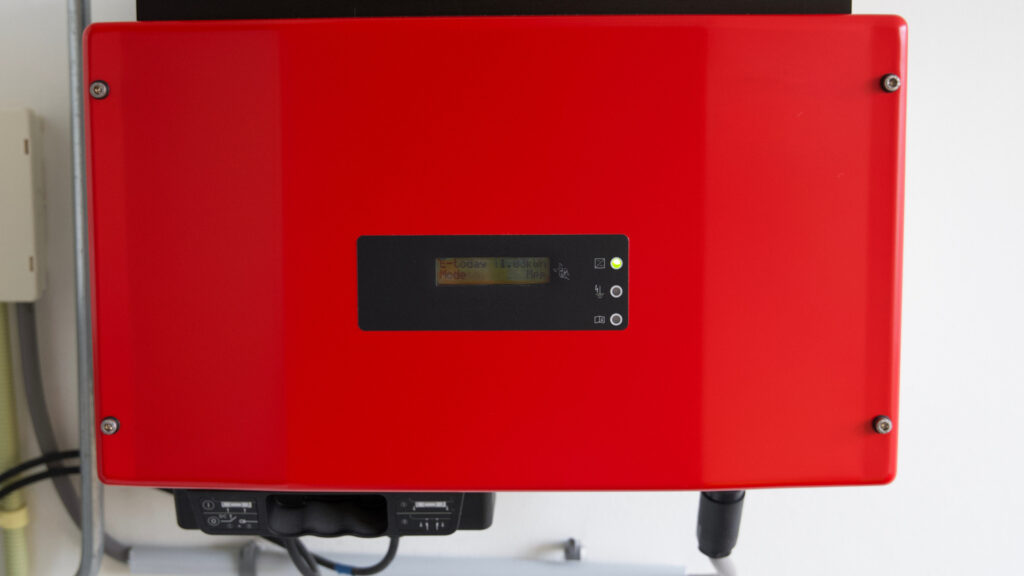
Is an Inverter Better Than a Generator?
A generator and an RV inverter both generate 110v AC power, so you can live without one or the other. But if you only have a generator to run your AC appliances, there may be times when running its loud engine is inconvenient or not allowed. Or you may not have enough fuel to run it for the length of time needed.
On the other hand, an inverter is quiet and available as long as you have juice in your battery or hooked up to shore power. It also produces more consistent current than a generator, keeping your electronic devices happy.
It is easy to see a need for a generator and an inverter in any RV setup. But you may have to look at the pros and cons of your camping style and rig limitations to decide if you only want to depend upon one or the other.
Is an RV Power Inverter Worth It?
If you want to get full use of your RV appliances and equipment without being required to run your generator all the time, an RV power inverter is essential. It is a dependable part of your electrical system that can operate when the generator can’t. It will provide a smooth, steady current for all your AC needs without putting finicky electronic devices at risk. Once installed, you will wonder how you ever enjoyed camping without this worthwhile investment!
Will you get an RV power inverter for your RV?




